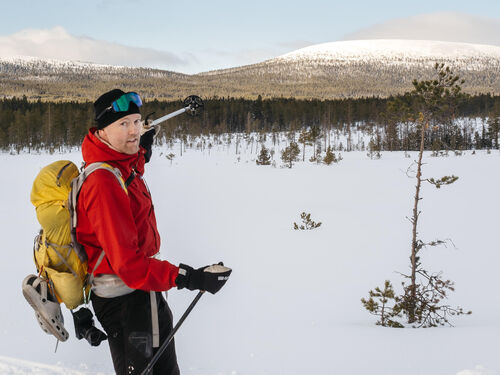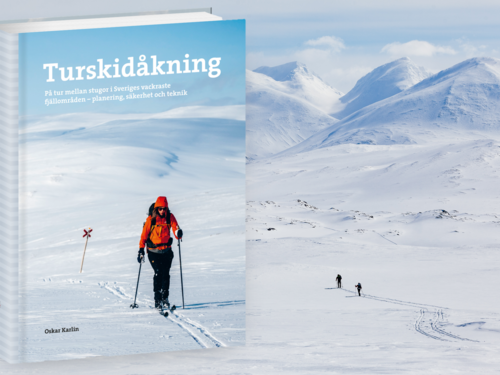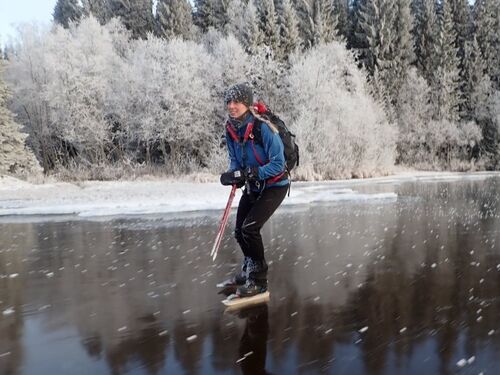Här finns det mycket information
Sökte lite till och hittade denna finska site
http://herkules.oulu.fi/isbn9514259882/html/c287.html
med mycket bra information om bland annat huvudets fysiologi vid kyla se citatet nedan:
Thure
------------
"2.1.3. The head in the cold
The head forms 5% of the body weight and 7% of the surface area (about 0.12 m2 in 70-kg adult man). It uses 20% of the total body oxygen consumption and 15% of the circulating blood volume in resting man. Brain forms 40% of the mass of the head, and its thermal production (20 W) is quite constant and continuous. Additional thermal energy to the head comes from other organs of the body via blood vessels. The rate of circulation in the head depends only a little on the grade of physical performance. A stable temperature between 35.5—41.0*C is necessary for the undisturbed function of the brain. (Paso et al 1989.)
The head differs from the extremities and trunk by having a very constant skin temperature at different ambient temperatures, even in the cold. This has led to the conclusion that the head (with the exception of ears) takes little part in the body´s vasoconstrictory reflexes in mild hypothermia (Burton 1934, Hertzman & Roth 1942, Froese & Burton 1957, Steegmann 1979). Only minimal vasoconstrictive changes were found in temperature alterations from normothermia (room temperature) towards mild hypothermia (bath in 21*C water). Facial evaporative heat loss rate did not change significantly between normo- and hypothermia, either (Rasch & Cabanac 1993). Low ambient temperature (+10*C) had no effect on the head tissue insulation of 0.06 m2K/W even though the finger tissue insulation increased simultaneously six-fold (Froese & Burton 1957). In hyperthermia (warm bath at 41*C), however, the blood flow in the facial skin increased 3 to 9 fold by active vasodilatation with only a minor change in skin temperature (due to increased evaporative thermal loss). This sequence of findings was explained by a theory that vasoconstriction seems to be the general vasomotor state in the facial skin already during normothermia (Rasch & Cabanac 1993), and therefore the vasoconstrictive response in the cold was almost absent.
For this behaviour, the thermal resistance of head tissues is very constant in different ambient temperatures below room temperature. The relative lack of vasoconstrictive response in the cold keeps the facial skin temperature quite high compared with other regions of the body and leads to an increasing proportion of heat loss from the head as the ambient temperature declines (Ilmarinen 1987). The dry heat loss from the head is constantly about 45 W/m2 when the ambient temperature is between +20*C and –30*C. Bare-headed man loses through his head 5% from total body heat loss in thermal comfort, but a much higher proportion, up to 80% in heavy physical work in the cold, when the body elsewhere is covered by warm clothing and evaporative heat loss occurs mainly from the head and in respiration (Elias & Jackson 1996). The sweating capacity of the head (ml/ surface area) differs regionally in the following order: forehead > cheeks > neck > chin corresponding with the density of sweat glands (Paso et al. 1989).
Also the skin of the head has AVAs, most of them in the tip of the nose, as well as in the ear lobes (Bergersen 1993). The blood flow rate in the nose and ear lobes is almost equal to that in the finger pulp, and is almost twice as high as that in the toes. On the forehead there are only very few AVAs (Midttun & Sejrsen 1996). CIVD in the head was found to be most frequent in nose and cheeks, but its magnitude was small (only 1—2*C change in temperature) compared with toes and fingers (Steegmann 1979). Also ears participate in CIVD (Lewis 1930).
The average skin temperature of the head is about 32—34*C at room temperature in whole body thermal balance. There are, however, quite distinctive differences of skin temperature between regions of the head in the cold when no garments are protecting it. The anatomy of superficial vasculature in the head affects the skin temperature significantly (Edwards & Burton 1960, Fig. 6). In ambient temperature of 0oC the increasing order of skin temperature in different locations of the uncovered head is as follows: rims of auricles < auricles < nose < chin < cheeks < forehead < neck < scalp (Edwards & Burton 1960, Steegmann 1979, Fig. 7). The coldest regions need most protection against adverse effects of the cold."











